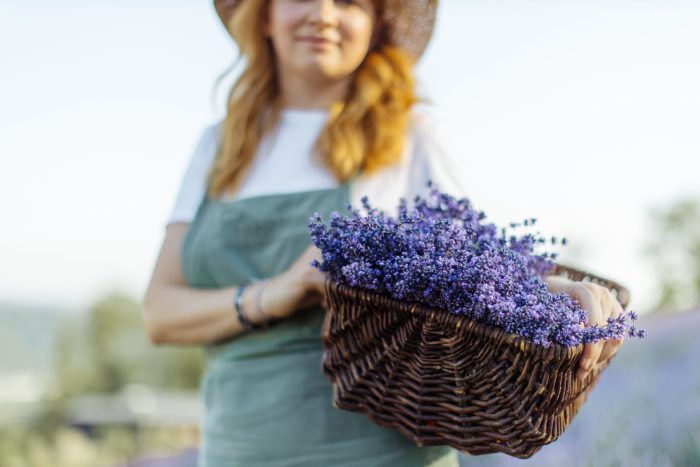*Elephant is not your doctor or hospital. Our lawyers would say “this web site is not designed to, and should not be construed to provide medical advice, professional diagnosis, opinion, or treatment to you or any other individual, and is not intended as a substitute for medical or professional care and treatment.” But we can’t afford lawyers, and you knew all that. ~ Ed.
~
It has been marketed to us that natural medicine comes as tablets in small bottles—not much different than pharmaceutical medicines really, in terms of how we take them.
Right next to the ibuprofen or aspirin in our home medicine cabinet are bottles of vitamin C or Blackmores cold and flu support supplement.
But taking a handful of supplements every day is not a wholistic approach to health. It is living plants that carry what I like to refer to as life energy; the Indians might call it prana, while the Chinese call it Qi.
Consider this: Do you know what echinacea tastes like? How it tingles your tongue? Do you know what the turmeric plant looks like? How beautiful the ancient ginkgo trees are in the autumn in Japan?
When we develop relationships with the plants in our own surroundings, we are more likely to protect them. And our garden, the neighbours’ gardens, the local parklands, and our environment can do with all the protection we can offer. If we can smell these plants, see them, and appreciate their living vitality, we can remember on some level our own vitality.
Imagine a world without plants. We would not be here—we exist because plants exist.
When we buy capsules and tablets of exotic plant medicines from other parts of the world, we can brush past the fact that they may be endangered in the wild, that slave labour may have been used, that the farmers growing them may have been paid pittance by brokers, or that the life energy in them is missing or depleted by the time they are processed. We do not need to reject the many benefits of the modern world, but to only have a relationship with the bottles and not the living plants is sad and unnecessary. It objectifies plants, which are alive, and makes us less likely to want to protect the world for future generations.
On my street and many others in Perth, Australia, we grow simple lavender, roses, and rosemary. Lavender is excellent for relaxation, insomnia, and adrenal exhaustion. We can put it in a tea, crush it and smell it as we walk past, or pick some and place it in a cloth bag under our pillow. We can develop a relationship with lavender.
Smelling a rose opens the heart and takes us out of our world of problems for a moment and into beauty. Placing some scented petals in my morning cup of tea, as I did this morning, brings delight and a deep sigh. They have physiological benefits and have been used in herbalism for thousands of years. We can create a relationship with roses.
Rosemary is wonderful for the brain, for waking us up, and for helping the circulatory system and heart. We can put some branches of rosemary in a bottle of red wine and let it steep for a few weeks before drinking—a little at a time!—as it’s a wonderful heart tonic. Or put some in our winter stews for that pungent, circulation-stimulating taste and smell. We can form a relationship with rosemary.
Doesn’t it feel somewhat more enlivening to walk outside and pick herbs to add to dinner than pour them from a jar bought in the supermarket?
In Perth, we have a common native street tree we call Western Australian Peppermint, or Agonis flexuosa. It is our equivalent tothe English weeping willow with the way it hangs, but it also has the most beautiful peppermint scent. The Noongar name for it is Wonnil, and they burned this plant in smoking ceremonies for cleansing and healing. Can we not also use this abundant plant, rather than smudge sticks shipped from California?
Turmeric is grown in tropical Asian countries and the potent curcumin is extracted from it. It has proven anti-inflammatory benefits, even in its whole plant form. The areas in India where it is used extensively in their diet have lower levels of inflammatory issues. Businesses can’t patent whole foods, so they create fancy-named extracts with proven scientific benefits. Often the original plant can be good enough if you can include it in your regular diet. We can also grow it ourselves if we’re in the right climate or attempt to grow other plants that have proven anti-inflammatory benefits, including garlic, rosemary, tomatoes, olive oil, olive leaf, green leafy vegetables, berries, honey, lemons, avocados, Gotu kola, parsley, and many more.
Not everyone is going to want to dive deep into the world of herbal medicine, particularly with the amount of science needed for treating others. But we can look after ourselves and our loved ones with safe, local plant medicines. We can create bonds and living relationships with plants in our area. And when we look after them, they will provide us with beauty, medicine, and nourishment.
The herbal manufacturing industry is a huge, worldwide business with many middlemen, which makes it unsustainable for our planet. We do not need to have access to hundreds of medicinal plants, especially when doing so comes at such a high cost. If we just learned to use 20 medicinal plants that we can grow or access locally, include them in our diet, or made simple medicinal teas, creams, or wine medicines from them, we would have many of our basic needs covered. When used preventatively, for minor issues, we also help prevent the need for stronger medicines later.
And by emphasising local, we reconnect with the earth, with the life energy that nourishes us all. We must recognise that this is what the world needs: to love where we live, to connect with it, and to nourish its potential to feed and heal us. We need to form these relationships before it is too late.
This doesn’t mean we have to reject modern medicine or even nutraceuticals—they have their place. But we do need to love and appreciate real, living plants and not just a list of their benefits on the side of a pill bottle.
~












Read 1 comment and reply